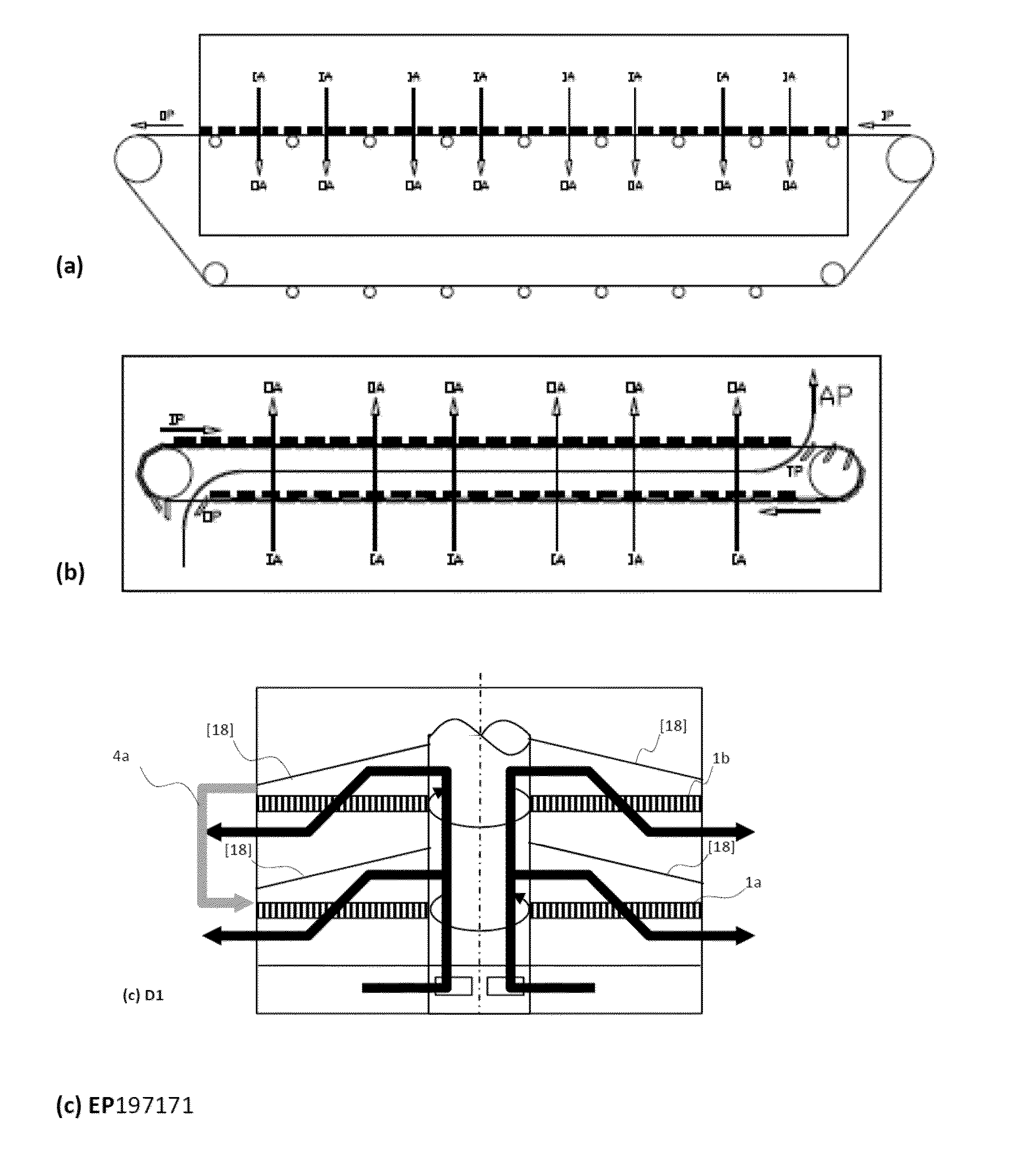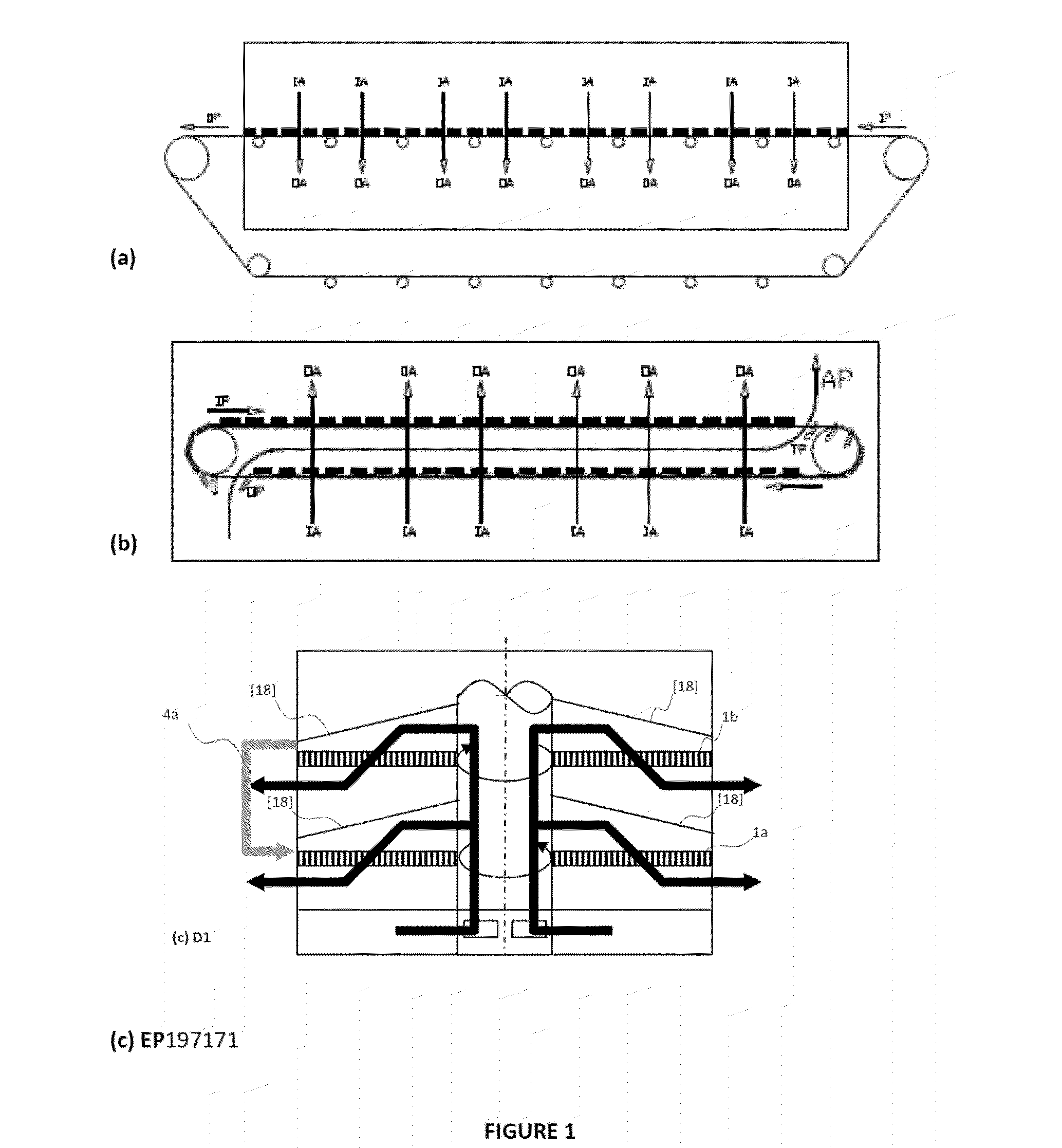Continuous particle drying apparatus
a drying apparatus and particle technology, applied in drying, light-emitting apparatus, furnace types, etc., can solve the problems of difficult mounting/removing on the apparatus, high cost of belts of such dimensions, and inability to achieve drying methods, etc., to facilitate the transfer of partially dried particles from the upper first deck to the lower second deck, and reduce the generation of dus
- Summary
- Abstract
- Description
- Claims
- Application Information
AI Technical Summary
Benefits of technology
Problems solved by technology
Method used
Image
Examples
Embodiment Construction
[0032]Unlike the linear motion of the belt or perforated deck dryers currently available on the market for drying particles and represented schematically in FIG. 1, the dryer of the present invention is based on the rotary motions in opposite directions of at least one first and one second superposed deck (1a, 1b). This approach allows for the design of particle drying equipment to be much more compact than the dryers with linear motion. In particular and as illustrated in FIGS. 2 to 4, a dryer according to the present invention comprises a first circular deck (1a) mounted substantially horizontally in rotation in a first direction about a vertical axis, Z, the surface of said deck being perforated and permeable to the gases such as air and steam and to water. A motor (7a) rotates the first deck (1a). A first means (2a) for distributing said particles to be dried is mounted above the first deck so as to be able to distribute said particles before drying along a radius of the first d...
PUM
 Login to View More
Login to View More Abstract
Description
Claims
Application Information
 Login to View More
Login to View More - R&D
- Intellectual Property
- Life Sciences
- Materials
- Tech Scout
- Unparalleled Data Quality
- Higher Quality Content
- 60% Fewer Hallucinations
Browse by: Latest US Patents, China's latest patents, Technical Efficacy Thesaurus, Application Domain, Technology Topic, Popular Technical Reports.
© 2025 PatSnap. All rights reserved.Legal|Privacy policy|Modern Slavery Act Transparency Statement|Sitemap|About US| Contact US: help@patsnap.com



